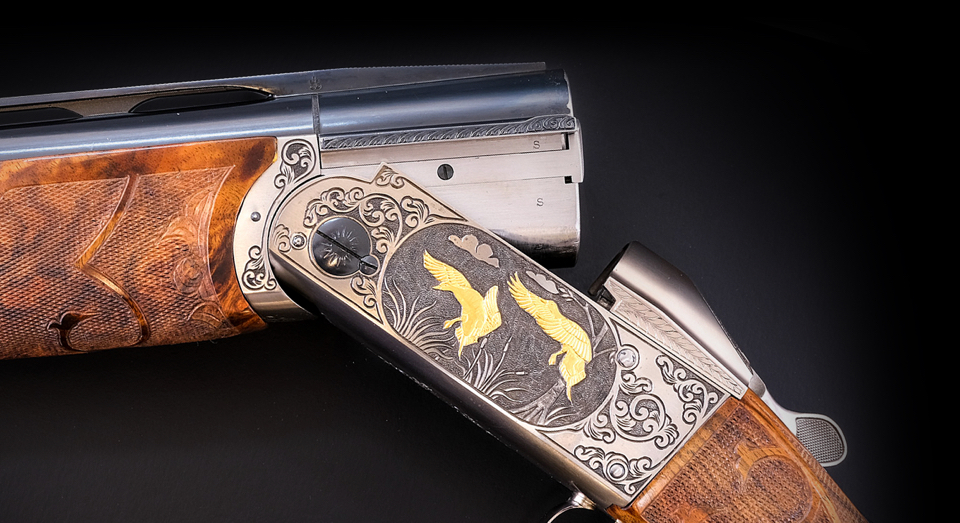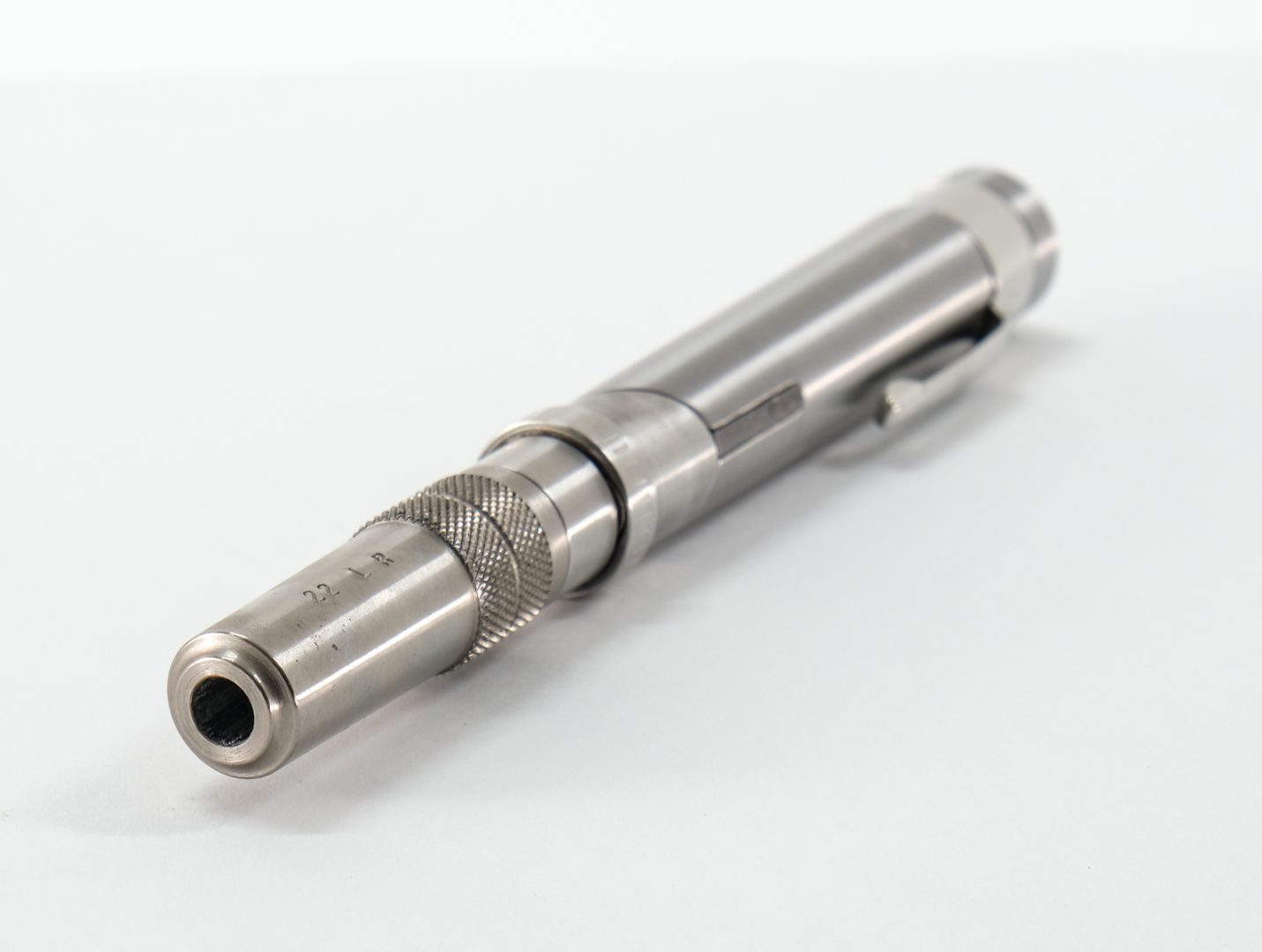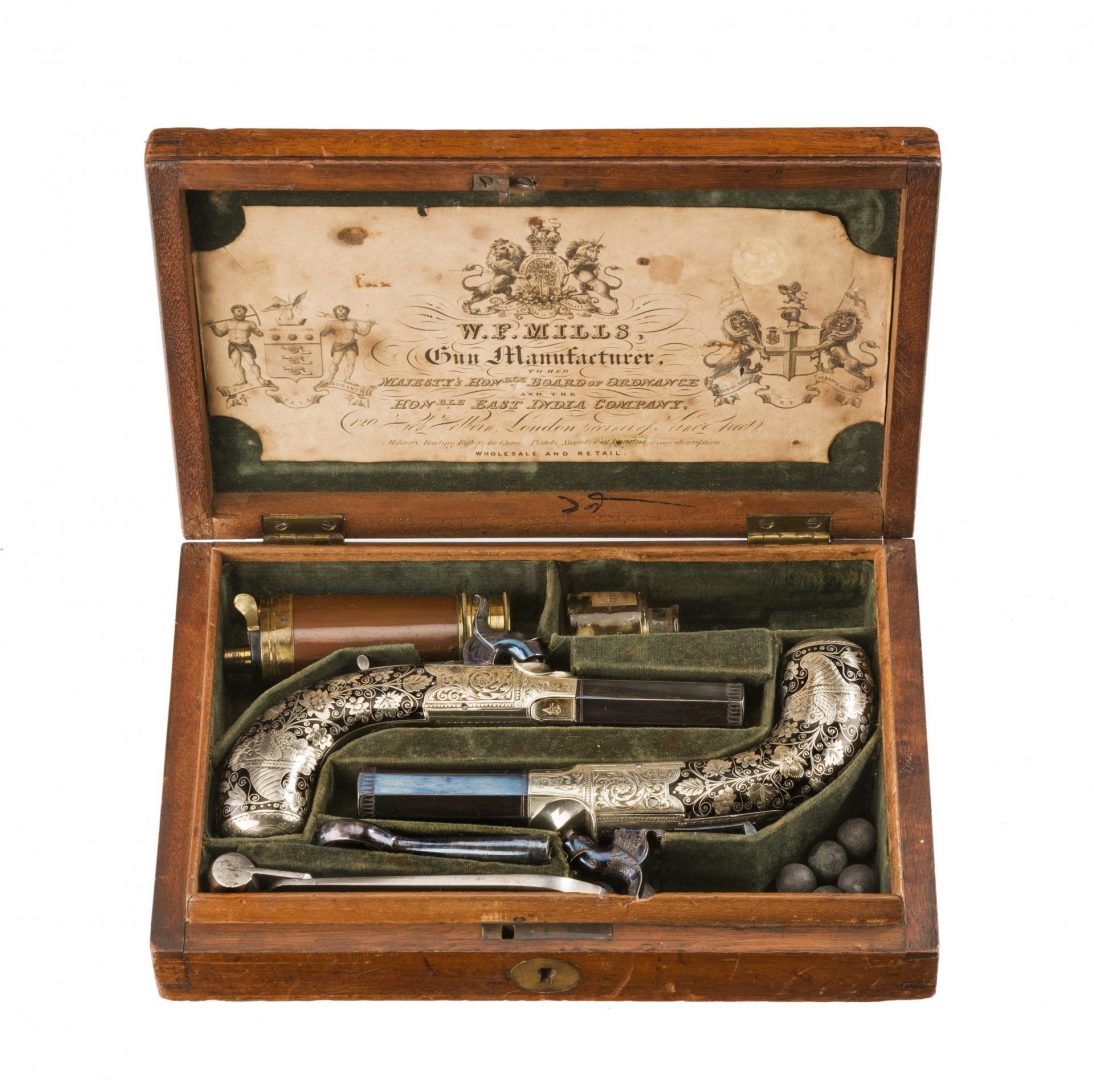A flintlock pistol dates back to the early 16th century, before the invention of flintlock ignition. These pistols were common in colonial America, right through to the early 19th century. Starting in 1660, England’s Army made the flintlock firing system standard issue, which lasted all the way through the American Revolutionary War.
Learn everything you need to know about flintlock pistols and where they come from. Discover the fascinating history behind the flintlock ignition system, how it was developed, and what it evolved into. And, find out the inner workings of a flintlock pistol that was used in 15th and 16th-century warfare.
What is a Flintlock Pistol and How Does it Work?
Anyone who has seen a film that takes place during the American Revolutionary War has seen a flintlock pistol – either on a staged battlefield or in a dramatic pistol duel. In 1660, flintlock pistols and rifles started becoming much more widely available, thanks to the English Armies’ adoption of the flintlock “Brown Bess” rifle. And, over the next century, flintlock rifles and pistols became increasingly affordable to manufacture, and much more widely available to the American colonists across the Atlantic.

What Makes the Flintlock Pistol Unique and Noteworthy?
In the 16th and 17th centuries, a flintlock pistol or rifle was the most sophisticated piece of technology that any common person owned. Today, the inner-mechanics of guns are relatively simple, compared to a flintlock firearm. To begin with, at the time when flintlock guns were invented, mass manufacturing methods were yet to exist – meaning every piece of every gun was forged by hand.
Almost every American colonist owned at least one flintlock gun, since, at the time it was an essential tool for hunting for food in the wilderness, as well as protecting your homestead from animals or intruders. There was no animal control service in colonial America if a bear or wolf wandered onto your claim – nor any 24-hour grocery store for when you fail at hunting because of a problem with your gun. And, that means that if a piece on your gun breaks, you can’t just run to the gun-shop and buy a replacement part – and the flintlock is designed with this in mind.
The mechanism of ignition on a flintlock firearm is as simple and efficient as existed at the time and paved the way for contemporary firearm mechanics. The flintlock ignition systems design made the firearm more shooter-friendly and feature very few components to minimize the chance of any piece breaking or malfunctioning when the shooter is ready to fire.
How to Make a Cannon Go “Boom”: The Basic Mechanics of Projectile Ballistics
As early as the mid-1300’s, warfare in Europe and Asia began to transform, due to the introduction of hand cannons on the field of battle. These handheld tubes, loaded with gunpowder and a small projectile, operated in much the same way as a traditional cannon. And, for a few hundred years, hand cannons remained largely unchanged in their design.
A hand cannon operates with a fuse hole, projectile or cannonball, and gunpowder. The metal tube is plugged at one end and a small hole holds a fuse. All you do is pour gunpowder into the open end, drop in your cannonball, and light the fuse.
When the fuse burns down to the gunpowder, an explosion propels the ball out of the tube. The benefit of the hand cannon is that the physics are just that simple – but it has plenty of drawbacks that the flintlock served to overcome. For example, a hand cannon does not allow the shooter to fire on-command, since they have to wait for the fuse to burn down and ignite the gunpowder.
How Does a Flintlock Gun Work?
The flintlock pistol and rifle enable the shooter to make a split-second decision on when to ignite the powder. Unlike a hand cannon, upon pulling the trigger, a mainspring propels the hammer, holding the flint, towards a frizzen (a piece of steel). When the flint and frizzen strike against each other, sparks fall into the pan and ignite the gunpowder – thus creating an explosion to propel the projectile.
The flintlock ignition system revolutionized gun design and warfare, forever. All at once, a shooter could make in-the-moment decisions as to when to “pull-the-trigger” – which was not an option for hand cannons. If you want to add a flintlock pistol or rifle to your gun collection, talk to a gun auction expert, or check out the antique firearms for sale at an upcoming auction near you.



